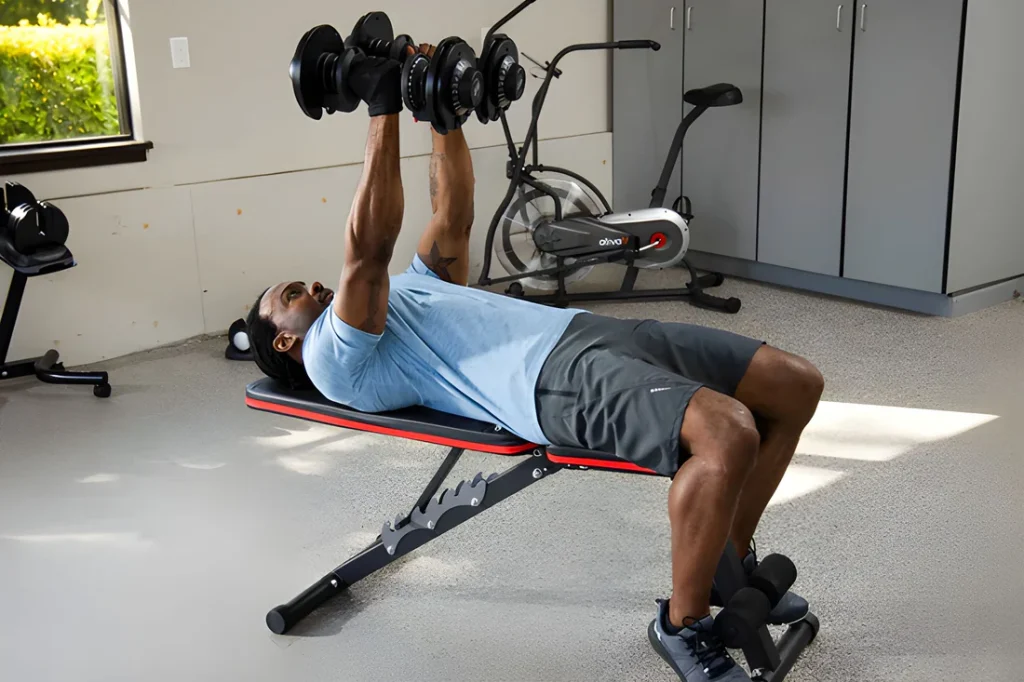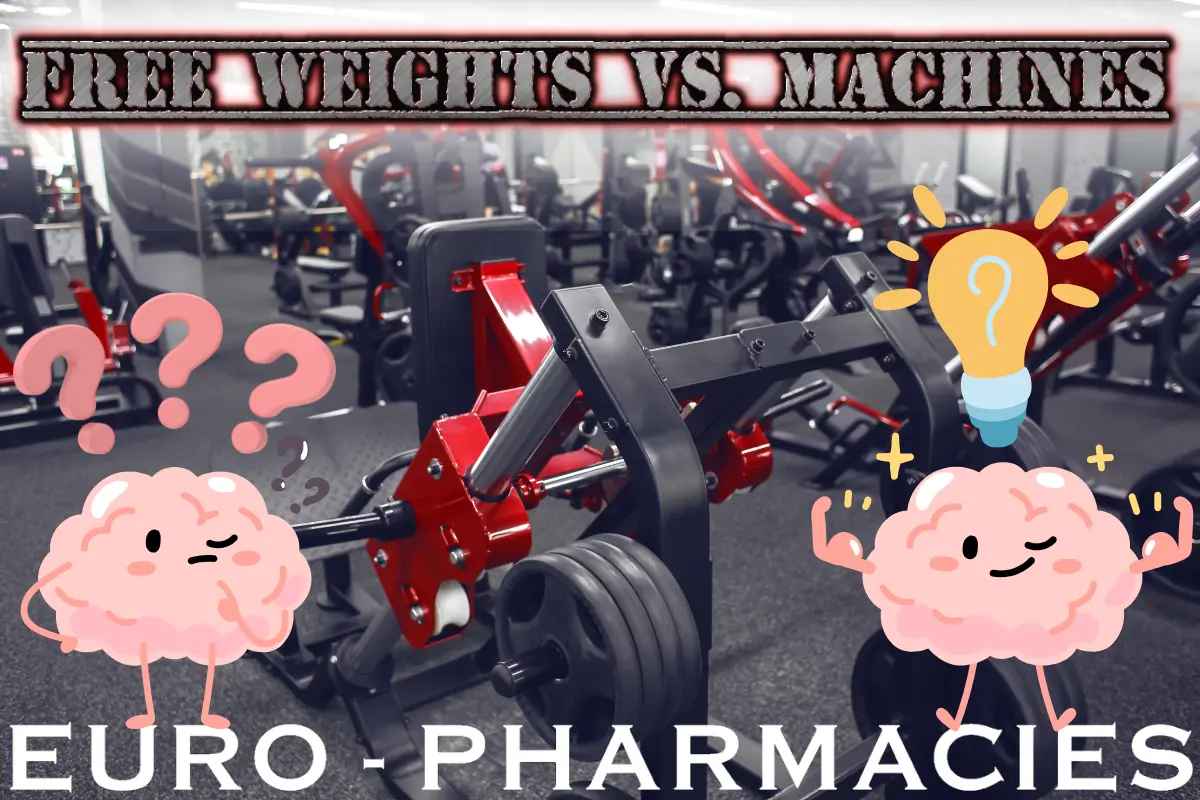Bodybuilding has always revolved around a central debate: are machines or free weights the better choice for building muscle, strength, and symmetry? From lifestyle athletes seeking longevity to competitive bodybuilders chasing the perfect physique, the answer isn’t as simple as declaring one “better” than the other. Instead, both tools play a critical role depending on goals, age, injury history, and training phase.
At Euro-Pharmacies, we recognize that building the best version of your body means using the right tools at the right time. Just as our AAS, PEDs, and ancillaries are designed to maximize performance, so too must your training methods be carefully chosen for optimal return on investment.
The Gold Standard of Raw Strength and Growth
Free weights—dumbbells, barbells, kettlebells—have long been hailed as the foundation of bodybuilding.
Advantages:
• Greater Muscle Recruitment – engages stabilizers, forcing multiple muscle groups to coordinate.
• Functional Strength – movements mimic athletic and real-world patterns.
• Progressive Overload Simplicity – easy to add weight plates and track progress.
• Customizable Range of Motion – adapt lifts to your mechanics, not a machine path.
• Hormonal Response – big lifts like squats and deadlifts stimulate systemic anabolic growth.
Limitations:
• Higher injury risk if the form breaks down.
• Steeper learning curve for beginners.
• Can be intimidating in a busy gym setting.
Machines: The Precision Tools of Bodybuilding
Machines often get criticized as “inferior,” but they offer unique advantages for hypertrophy, rehab, and safety.
Advantages of Machines:
• Safety – reduced risk of dropping weight or losing control.
• Isolation – target specific muscles without stabilizer fatigue.
• Controlled Range of Motion – ideal for those with mobility or injury issues.
• Time Efficiency – pin-loaded stacks make weight changes fast.
• Longevity Friendly – easier on joints for older lifters.
Limitations:
• Less stabilizer recruitment.
• Movement restricted by the machine path.
• Limited functional strength carryover.
Lifestyle vs. Competitive Bodybuilders
• Lifestyle Bodybuilders: Machines offer safer, joint-friendly training as lifters age. They allow hypertrophy without excessive systemic fatigue—perfect for longevity.
• Competitive Bodybuilders: Free weights remain essential for mass and density. Machines become critical in prep phases for the precision isolation of lagging muscles.
Special Considerations: Age and Injury
• Older Lifters: Machines are often preferable for pressing (chest/shoulders) to reduce joint strain, while free weights are still valuable for the lower body and pulling.
• Injuries: Machines allow workarounds—e.g., hack squats load quads without spinal compression; cables provide tendon-friendly resistance.
Top 10 Free Weight Exercises for Maximum ROI
1. Barbell Back Squat
2. Deadlift (Conventional or Romanian)
3. Bench Press (Barbell or Dumbbell)
4. Overhead Press (Standing Barbell or Dumbbell)
5. Barbell Row
6. Dumbbell Row
7. Pull-Ups/Chin-Ups (weighted when advanced)
8. Bulgarian Split Squat
9. Barbell Hip Thrust
10. Incline Dumbbell Press
Top 10 Machine-Based Exercises for Maximum ROI
1. Hack Squat Machine
2. Leg Press
3. Smith Machine Squats/Presses
4. Hammer Strength Chest Press
5. Seated Leg Curl (hamstrings)
6. Lat Pulldown (wide or neutral grip)
7. Seated Row Machine
8. Cable Lateral Raises
9. Pec Deck (chest fly)
10. Machine Preacher Curl
Final Takeaway
Declaring one tool “better” than the other is misleading—both are reigning supreme in their own categories. Free weights build raw mass and strength, while machines refine, isolate, and protect.
For lifestyle athletes, machines offer sustainability and joint safety. For competitors, it create density, while machines sharpen detail. The smartest athletes combine both strategically—just as they rely on Euro-Pharmacies’ AAS, PEDs, and ancillaries for precision and reliability.
In bodybuilding—as in supplementation—the key is not choosing one over the other, but knowing when to use each for maximum return on investment.

FAQs – Machines vs. Free Weights in Bodybuilding
Are free weights better than machines for muscle growth?
Free weights generally build more muscle mass and strength because they activate stabilizer muscles and allow natural movement patterns.
Can machines replace free weights in a workout?
Machines can complement but not completely replace free weights. They’re ideal for isolation, safety, and injury recovery phases.
Are machines safer than free weights?
Yes, machines are generally safer, especially for beginners or lifters with joint issues. They reduce the risk of losing balance or dropping weights.
Should beginners start with free weights or machines?
Beginners can start with machines to learn movement patterns safely, then progress to free weights for full-body strength development.
Do free weights burn more calories than machines?.
Yes, free weight exercises typically burn more calories because they recruit multiple muscles and stabilizers simultaneously.
Can older adults use free weights safely?
Yes, with proper form and moderate loads, free weights remain beneficial. However, machines may be preferable for joint-friendly training.
Which is better for bodybuilding competitions—machines or free weights?
Competitive bodybuilders rely on free weights for size and density, then use machines for isolation and detail work before shows.
What’s the best way to combine machines and free weights?
Use free weights for compound lifts like squats or presses, and machines for finishing isolation work to achieve complete muscle development.

